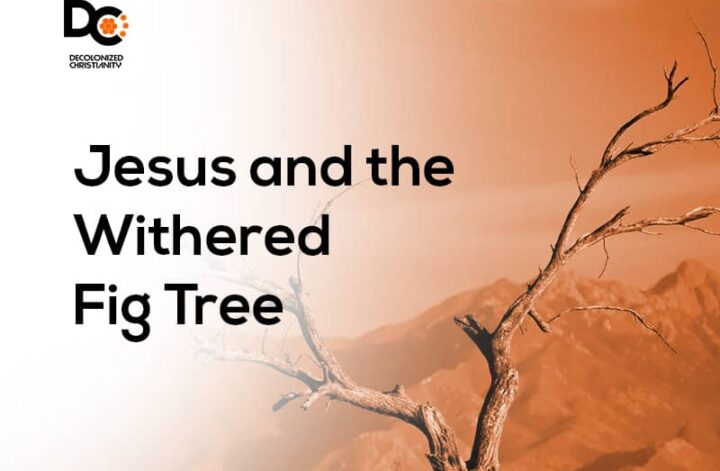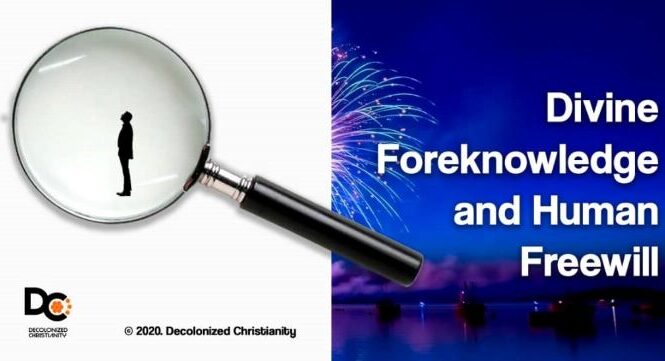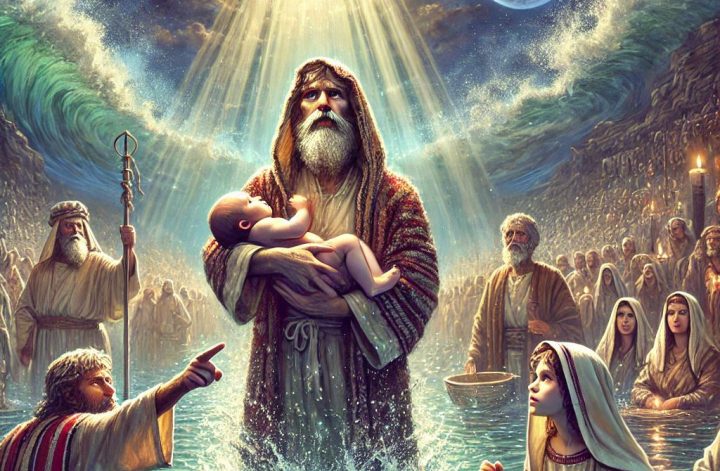Say to this mountain
Let us review what we know about the narrative content of Mark 11. The author sets up the chapter with Jesus’ Messianic entry into Jerusalem. This procession ends in a quite underwhelming manner as Jesus entered the temple late in the evening to observe the operations of the temple. As Brown puts it, the closure “is a surprisingly pedestrian finale to Jesus’ messianic action of riding up to Jerusalem on a colt in symbolic fulfillment of Zech 9:9” (82). Before Jesus would have another chance in the temple, he cursed a non-defective tree en route. In the temple, Jesus disturbed the typical daily operations by overturning tables and restricting movement in some parts of the temple. While doing all this, he alluded to two major Old Testament prophets. Later on the same day, Jesus left the city, and the disciples noticed that the cursed fig tree had withered. In reply, Jesus says (11:22-25):
Have faith in God,” Jesus answered. “Truly I tell you, if anyone says to this mountain, ‘Go, throw yourself into the sea,’ and does not doubt in their heart but believes that what they say will happen, it will be done for them. Therefore I tell you, whatever you ask for in prayer, believe that you have received it, and it will be yours. And when you stand praying, if you hold anything against anyone, forgive them, so that your Father in heaven may forgive you your sins.”
On the surface, Mark depicts Jesus as treating the fig tree episode as an exercise in faithful prayer. But this gets convoluted quickly. While the encouragement to “say to this mountain” is specific to the location of the Herodian temple, the “whatever you ask for in prayer” portion seems unrestricted. As pointed out earlier, however, these verses in Mark 11, which otherwise appear to be unconnected to the Markan narrative, are plausibly Jesus’ (or Mark’s) veiled response to the Judaic problem that would result should the temple be destroyed. The verses teach that God would still answer prayers even in the absence of a temple on an elevated location. The same is true about the teaching on forgiveness. As Kirk stresses, “one thing for which the temple was absolutely vital” was “the forgiveness of sins” (525). Within the narrative, therefore, Mark summarily announces the end of Judaism as it was known. This is even more plausible if the dating of the Gospel of Mark to just after 70 CE, when the Romans destroyed the Herodian temple, is correct. For in that case, while many Jews would naturally be deeply disturbed by the destruction of the temple, Mark and Jews who embraced the then new sect of Judaism—Christianity, that is—would have reasons to hope. For the New Judaism adherents, Yahweh no longer lived in temples built by human hands.
Isaiah’s Eschatological Temple
Earlier we considered Kirk’s argument that we ought to read Jesus’ temple-clearing act against the backgrounds of his allusions to Jeremiah and Isaiah. The Isaiah passage prophecies concerning a future arrangement where everyone would be acceptable before Yahweh. If Jesus’ condemnation of the Herodian temple amounted to saying that that temple was not the fulfillment of Isaiah’s vision, what then fulfills this vision? Kirk argues that Mark points his readers to “the community of Jesus’ faithful followers” (525) as the fulfillment of Isaiah’s vision. In other words, the new temple is not made of expensive stones and gold. Instead, it is made of a gathering of human beings. Kirk writes (526):
To be a follower of Jesus in Mark’s Gospel is to inherit Jesus’ prophetic ministry, representing the reign of God to the earth. The prophetic authority by which Jesus pronounced judgement (11:22-24; cf. 11:15-21; 13:1-26), worked powerfully (11:24; cf. esp. 9:29), and extended forgiveness of sins (11:25; cf. 2:1-2) would be vested in his followers. They will be the house of prayer for all the nations, the locus from which God extends forgiveness of sins.
Of course, many Jews would have found this idea strange in the First Century. After all, when Nebuchadnezzar destroyed the first temple built by Solomon, a new building—the Herodian temple—replaced it. Hence, many of those who understood Jesus’ prophecy concerning the temple would naturally expect a new building. However, Mark was not the only one who understood the fundamental change in the idea of a temple in the First Century. Though Mark does not explicitly say it, Paul developed the idea that a congregation of Jesus believers equals the new temple (cf 1 Cor 3;16-17; 2 Cor 6:16). Besides, this idea also seems to have more textual support in Mark.
As mentioned earlier, Scott Brown (82) points out that Mark 12:1-12 takes part in a complex intercalation that also includes the fig tree and temple-clearing episodes. Immediately after they question his authority to disrupt temple business, Jesus tells the parable of the tenants. In this parable, an owner planted a well-protected vineyard and rented it out to some tenant farmers while he moved to another place (12:1-2). At harvest time, the owner sent messengers to the tenants to send his portions of the fruits to him. Apparently, this was part of the leasing agreement. Strangely, the tenants would not only not honor the contract, they also maltreated the messengers that the owner sent (12: 3-5). Finally, the owner appealed to the tenants’ cultural sensibility by sending his only son to collect the harvest. Even more strangely, the tenants killed the son. In conclusion, Jesus says (12:9), “What then will the owner of the vineyard do? He will come and kill those tenants and give the vineyard to others.”
Some referents in the parable are obvious. Mark 12:12 clarifies that the evil tenants are the “chief priests, the teachers of the law, and the elders.” Surely, the owner of the vineyard is Yahweh, the son is Jesus himself, and the maltreated messengers are prophets before Jesus. However, the other referents are not so clear. The vineyard very likely does not refer to the temple, since Mark explicitly says that the temple will be destroyed in chapter 13 and the parable says that the vineyard will be given to some other people. So, what are the referents for the “vineyard,” the “others” to whom the vineyard would be given, and the “fruit” that the owner demanded? Brown argues “that the ‘others’ are Jesus’ followers and that the vineyard is the covenant relationship between God and Israel” (85). The “fruit” symbolizes righteousness, as already explained. Brown further writes (85): “For Mark the barren fig tree and the withheld grapes are complementary symbols of unrighteousness, just as they are in Jer 8:13 . . . and Mic 7:1”. This identification of “others” as the followers of Jesus connects well with our earlier reading of Mark 11:24-25. It is interesting to note that many of these First Century followers were non-Jews and foreigners. One wonders if this has anything to do with the “foreigners” in Isaiah’s vision who were promised a place on Yahweh’s holy mountain and “joy” in his “house of prayer for all nations” (56:7).
Works Cited
Brown, Scott G. “Mark 11:1-12:12: A Triple Intercalation?” The Catholic Biblical Quarterly, vol. 64, no. 1, 2002, pp. 78–89. JSTOR, www.jstor.org/stable/43727322. Accessed 14 Nov. 2020.
Kirk, J. R. Daniel. “Time for Figs, Temple Destruction, and Houses of Prayer in Mark 11:12-25.” The Catholic Biblical Quarterly, vol. 74, no. 3, 2012, pp. 509–527., www.jstor.org/stable/43727987. Accessed 14 Nov. 2020.




